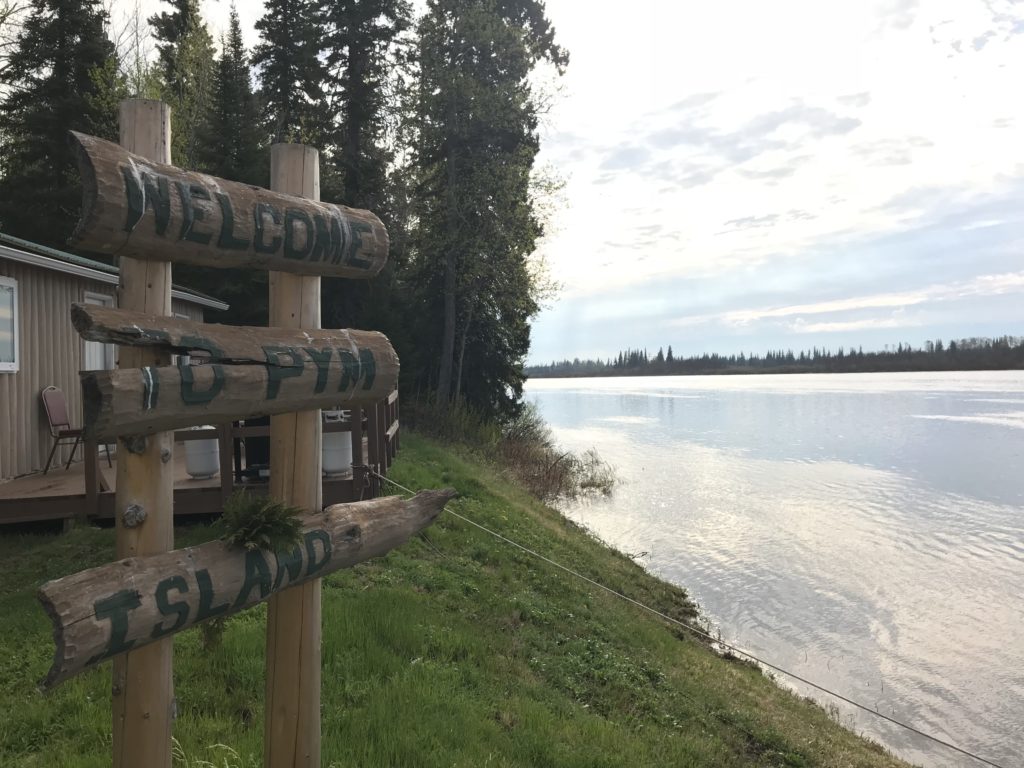 When I went on my first ever fly in fishing trip, I described it as a once in a lifetime experience, a real bucket list opportunity that I’d be able to look back upon and say “I did it”. What I didn’t expect was how that trip would magnify my love of fishing, but that also through research and networking I’d find ways to have many, many more trips since then. Fast forward to last year, when the planning began for the 2018 trip (yes, I now go on at least one fly in trip per season), and it was time to look at doing something extra special. The reason, like it was so many years ago, was that my father would be joining in, warranting something unique. The phone call was made to Melanie at Hearst Air, and the trip was booked to Pym Island, located on the Attawapiskat River in northern Ontario. We’d be the first group in for the season, meaning we’d have the first crack at what was known to be a factory of large Northern Pike and Walleye.
When I went on my first ever fly in fishing trip, I described it as a once in a lifetime experience, a real bucket list opportunity that I’d be able to look back upon and say “I did it”. What I didn’t expect was how that trip would magnify my love of fishing, but that also through research and networking I’d find ways to have many, many more trips since then. Fast forward to last year, when the planning began for the 2018 trip (yes, I now go on at least one fly in trip per season), and it was time to look at doing something extra special. The reason, like it was so many years ago, was that my father would be joining in, warranting something unique. The phone call was made to Melanie at Hearst Air, and the trip was booked to Pym Island, located on the Attawapiskat River in northern Ontario. We’d be the first group in for the season, meaning we’d have the first crack at what was known to be a factory of large Northern Pike and Walleye.
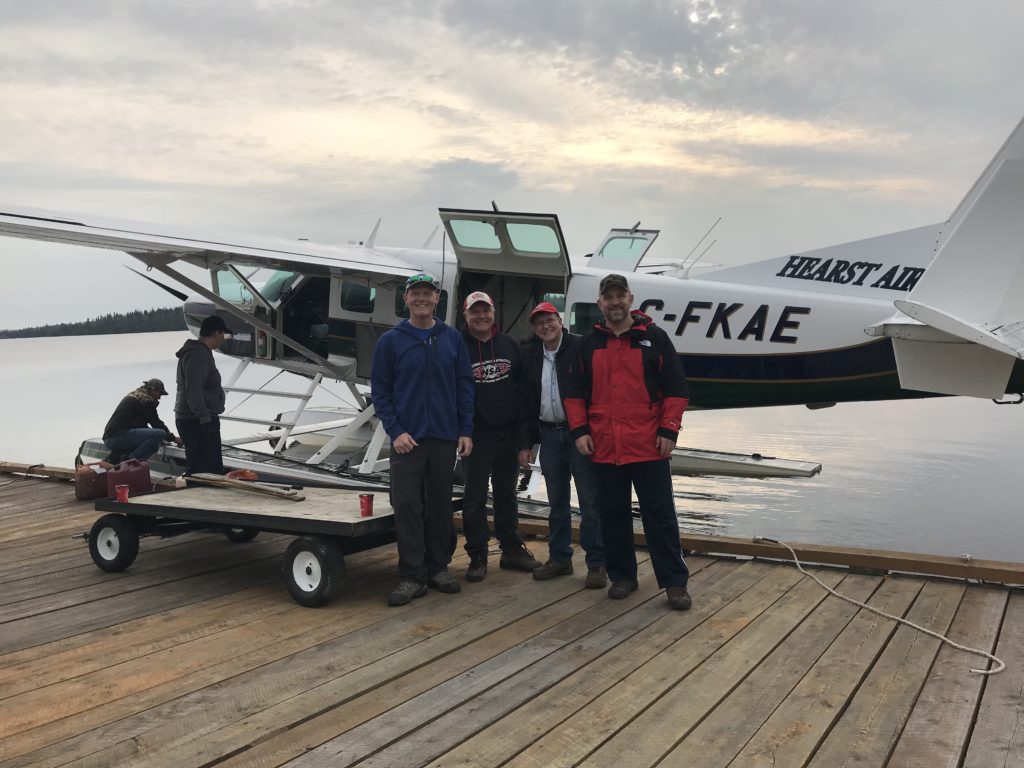 Our group of four had a number of trips under our belt, but this would be the first time any of us would be tackling a large river system like the Attiwapiskat, which can fluctuate in depth and current significantly during the season, and even during a single trip. A real differentiator on this trip though, was that you had a full time guide living on site, who not only took care of the day to day operations on site, but who was an experienced First Nations River Guide. We’d need the Guide – the Attiwapiskat in its totality flows for almost 750KM and has uncounted bends and tributaries to fish. With only the flow of the river to guide you, it would be easy to get turned around on this water, let alone locate the fish.
Our group of four had a number of trips under our belt, but this would be the first time any of us would be tackling a large river system like the Attiwapiskat, which can fluctuate in depth and current significantly during the season, and even during a single trip. A real differentiator on this trip though, was that you had a full time guide living on site, who not only took care of the day to day operations on site, but who was an experienced First Nations River Guide. We’d need the Guide – the Attiwapiskat in its totality flows for almost 750KM and has uncounted bends and tributaries to fish. With only the flow of the river to guide you, it would be easy to get turned around on this water, let alone locate the fish.
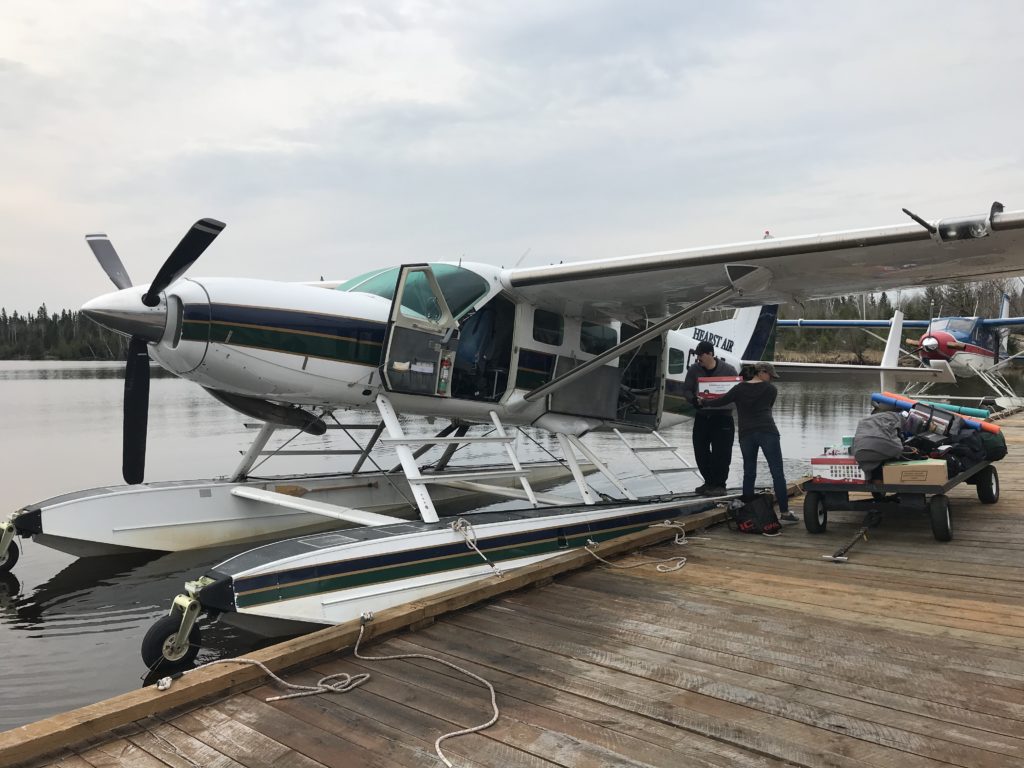 We travelled from Southwestern Ontario, making a 1000km drive to Hearst, Ontario, where we stayed for the night. The morning of the trip we headed to Carey Lake, the launch point for all of Hearst Air Services Operations. I’ve flown with this outfitter on three previous occasions and they are a treat to deal with. This flight would see us board a Caravan, and make a 200 mile journey north. For a fly in trip, the over 90 minute flight is by far the longest we’d been on, a real testament to how far we would be travelling into the bush. The flight, while long, was incredibly smooth, made possible both by the larger size of the plane, but also the great weather we had. Northern Ontario can be breathtaking so see from the air, with the rivers winding, the harsh reveal of the clear cuts, and the general change in topography as you fly further north.
We travelled from Southwestern Ontario, making a 1000km drive to Hearst, Ontario, where we stayed for the night. The morning of the trip we headed to Carey Lake, the launch point for all of Hearst Air Services Operations. I’ve flown with this outfitter on three previous occasions and they are a treat to deal with. This flight would see us board a Caravan, and make a 200 mile journey north. For a fly in trip, the over 90 minute flight is by far the longest we’d been on, a real testament to how far we would be travelling into the bush. The flight, while long, was incredibly smooth, made possible both by the larger size of the plane, but also the great weather we had. Northern Ontario can be breathtaking so see from the air, with the rivers winding, the harsh reveal of the clear cuts, and the general change in topography as you fly further north.
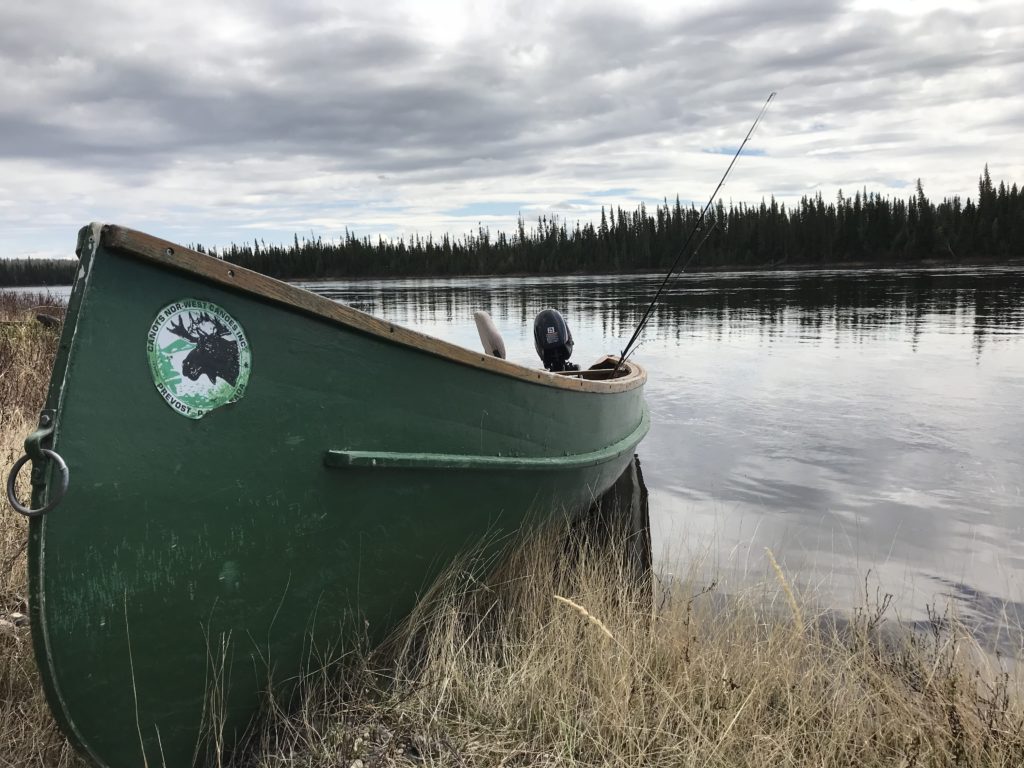 The camp on Pym Island is well set up, and efficient. There are quarters for the guide, as well as a three bedroom cottage for the guests. You’ll always have the camp to yourself when you fly to Pym Island. Your cabin has electricity from a generator, a wood stove, fridge, deep freeze and a propane stove. All of your cooking gear is provided. There is running hot and cold water to the cabin, combined with a shower house as a stand alone building, and an outhouse. Really, for how remote this camp is, the amenteties were luxurious. One of the real highlights was the boats, 20ft freighter canoes that could accommodate 3 people fishing while still being both spacious and stable. Pushed along by 25hp four strokes, they were quiet and comfortable, both much appreciated for the long runs we made up and downstream.
The camp on Pym Island is well set up, and efficient. There are quarters for the guide, as well as a three bedroom cottage for the guests. You’ll always have the camp to yourself when you fly to Pym Island. Your cabin has electricity from a generator, a wood stove, fridge, deep freeze and a propane stove. All of your cooking gear is provided. There is running hot and cold water to the cabin, combined with a shower house as a stand alone building, and an outhouse. Really, for how remote this camp is, the amenteties were luxurious. One of the real highlights was the boats, 20ft freighter canoes that could accommodate 3 people fishing while still being both spacious and stable. Pushed along by 25hp four strokes, they were quiet and comfortable, both much appreciated for the long runs we made up and downstream.
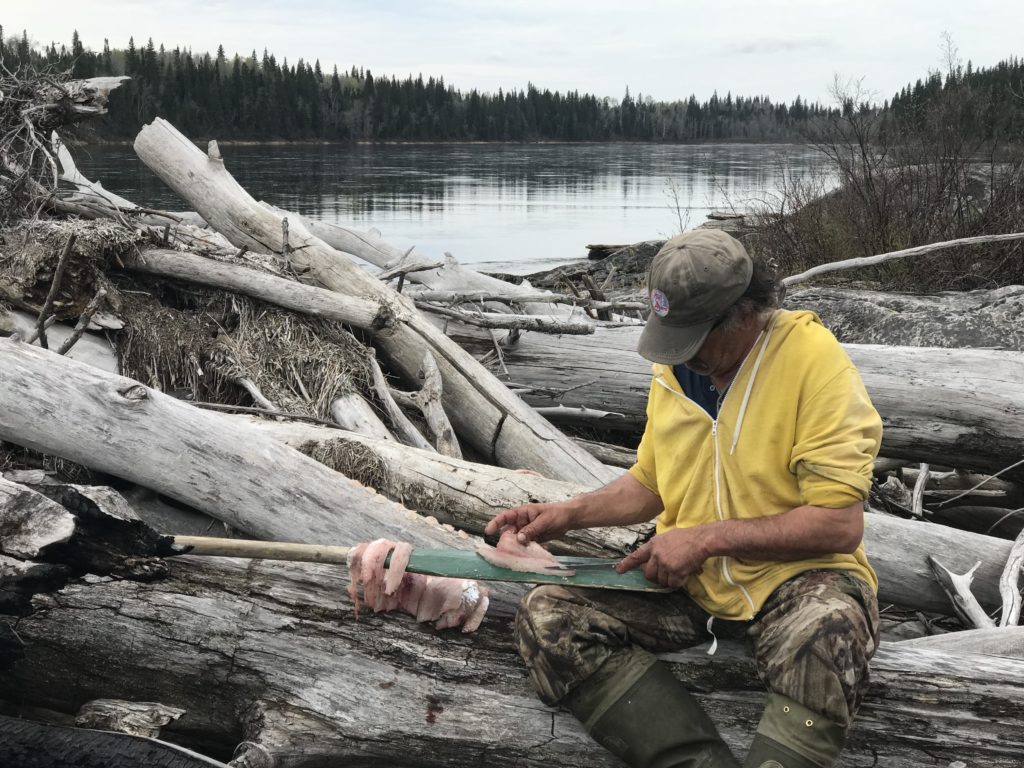 Fishing the river itself was both amazing by the size and quantity of fish, but also humbling in the sense that you have to fish in a way that is likely different than you’ve done in the past fishing lakes. Factoring in depth, water temperature, current, weather, the absence of weed growth, adjusting for structure that could be up or down depending on the current that day, there were so many factors on such an expansive body. I can’t imaging fishing it without the aid of our guide. If you’ve never had a great guide, I personally think you are missing out. Not only do they take you to proven locations, but they can provide valuable suggestions on lure selection and presentation. One of the key benefits in my experience, is their ability to make decisions on how much time to spend on a given spot, and when it’s time to move on. Our guide was also able to accommodate our hopes for seeing wildlife and took us to places where we had the chance to see moose, bald eagles, hawks, and Timberwolf!
Fishing the river itself was both amazing by the size and quantity of fish, but also humbling in the sense that you have to fish in a way that is likely different than you’ve done in the past fishing lakes. Factoring in depth, water temperature, current, weather, the absence of weed growth, adjusting for structure that could be up or down depending on the current that day, there were so many factors on such an expansive body. I can’t imaging fishing it without the aid of our guide. If you’ve never had a great guide, I personally think you are missing out. Not only do they take you to proven locations, but they can provide valuable suggestions on lure selection and presentation. One of the key benefits in my experience, is their ability to make decisions on how much time to spend on a given spot, and when it’s time to move on. Our guide was also able to accommodate our hopes for seeing wildlife and took us to places where we had the chance to see moose, bald eagles, hawks, and Timberwolf!
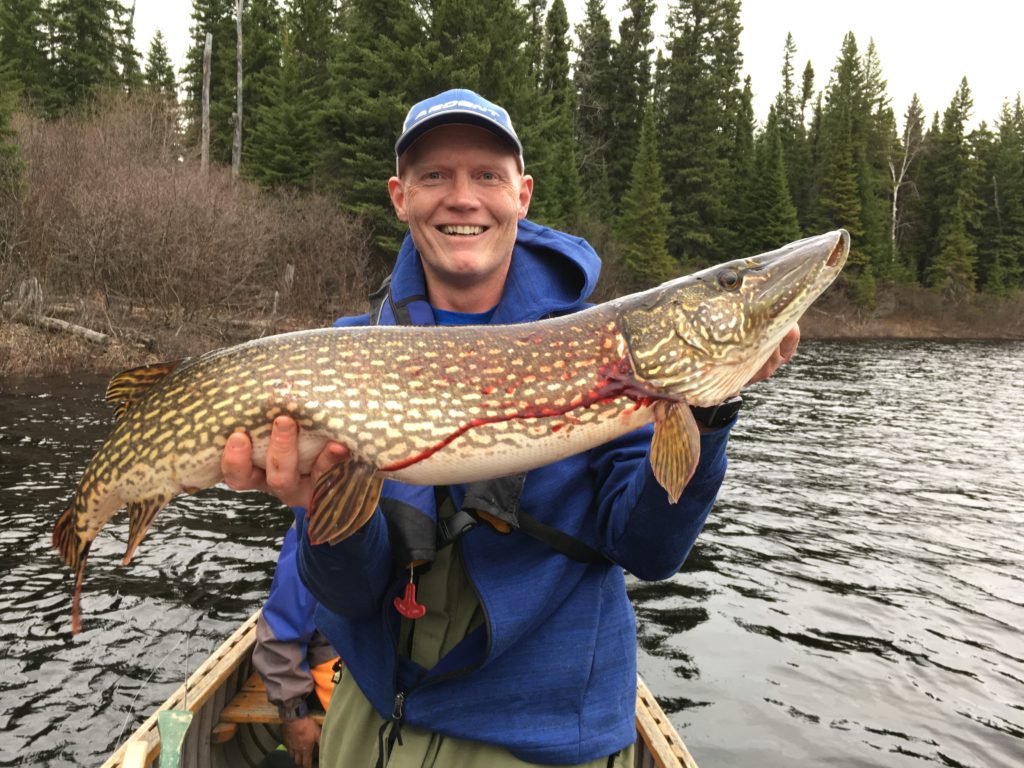 Our days were long, fishing from morning until sunset (which is quite a long time in May up north), but time well spent catching huge numbers of quality fish. Yes, despite the absence of fish picture so far, rest assured we caught plenty of fish, and big ones (for us). This trip was so special, I just couldn’t do it justice in one post, so I plan to dedicate one post each to The Pike of the Attawapiskat and The Walleye of the Attawapiskat.
Our days were long, fishing from morning until sunset (which is quite a long time in May up north), but time well spent catching huge numbers of quality fish. Yes, despite the absence of fish picture so far, rest assured we caught plenty of fish, and big ones (for us). This trip was so special, I just couldn’t do it justice in one post, so I plan to dedicate one post each to The Pike of the Attawapiskat and The Walleye of the Attawapiskat.
Our experience with nature wasn’t limited to wildlife. We also experienced all the weather nature could provide. From hard rain with high winds producing white caps against the current, to high sun with no clouds that actually shut the fishing down for a day and a half, to our final day where the temperature was below zero and we battled freezing drizzle and snow. When you go into the wild, you need to be prepared for the wild. Big fish in the boat, along with the knowledge of a warm fire and hot shower to come, made it easy to deal with the weather.
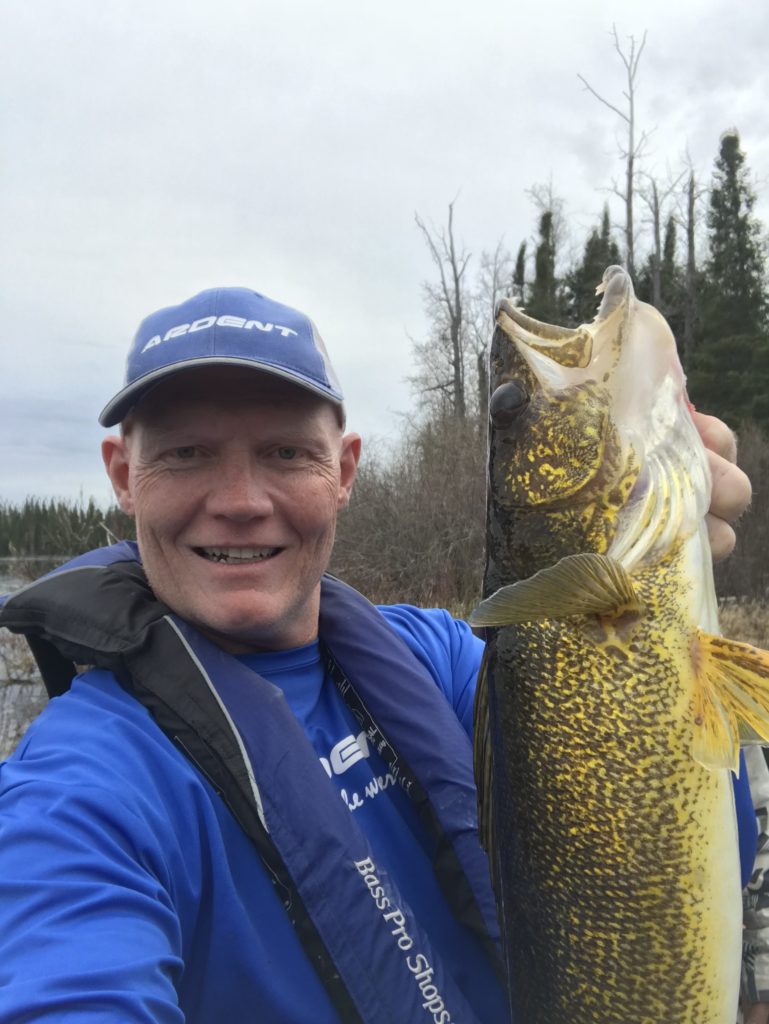 My time at Pym Island was the most special fishing trip I’ve been on to date. It was one of those experiences where it all just came together. Great location, fishing, company, and that extra special something that only the Attawapiskat can offer. I can’t wait to tell you more about the fishing. If you’d like to stay informed of when I add new posts, just sign up and you’ll get a weekly email showing the latest reports. And as always, if you’d like to connect and share your stories or ask for more information on any of the places I’ve fished, just email me at scott@canadianfisherman.ca and I’ll get back to you!
My time at Pym Island was the most special fishing trip I’ve been on to date. It was one of those experiences where it all just came together. Great location, fishing, company, and that extra special something that only the Attawapiskat can offer. I can’t wait to tell you more about the fishing. If you’d like to stay informed of when I add new posts, just sign up and you’ll get a weekly email showing the latest reports. And as always, if you’d like to connect and share your stories or ask for more information on any of the places I’ve fished, just email me at scott@canadianfisherman.ca and I’ll get back to you!
I really like your writing style, good info , regards for posting : D.